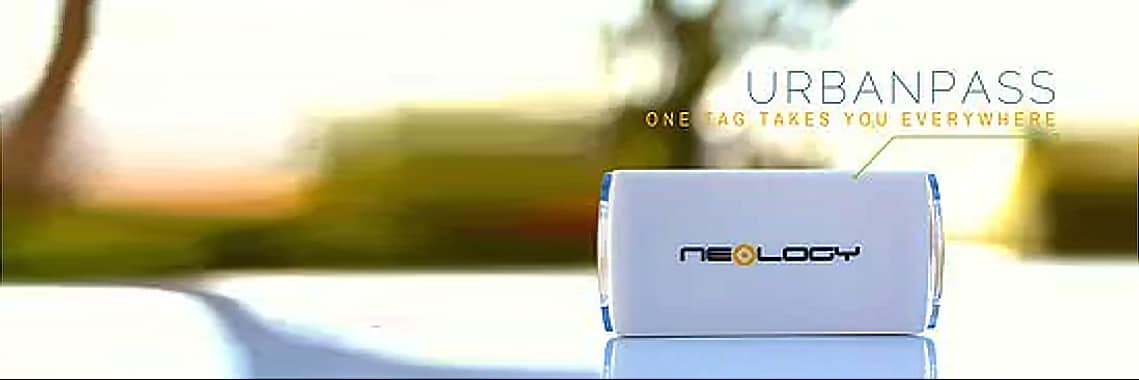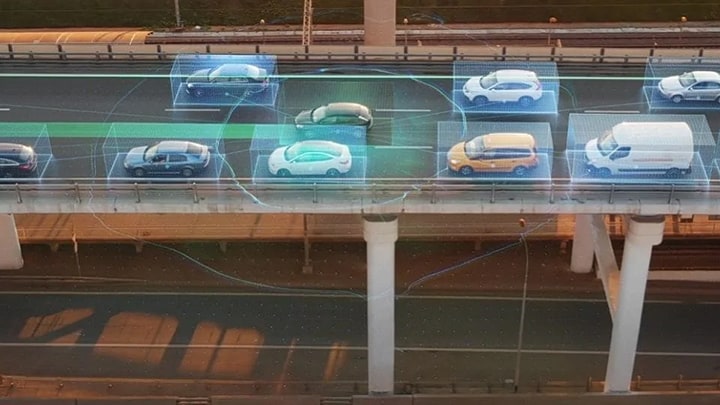Not too long ago, with the introduction of NFC-enabled mobile phones, people started using their cell phones as payment cards. Now think about doing
something similar, but with your car.
By placing a special tag, equipped with secure, long-range UHF RFID, on your
windshield or license plate, your car becomes an authentic credential which
can serve the same purpose as your loyalty, access or micro-payment card. You
can buy gas, pay for parking, enter a toll road or pick up a drive-through
meal – all without reaching for your wallet (or your phone).
Charge it to my car
The tag can be read at high speeds and over a long distance, so you
don’t have to stop or even slow down to make a payment. Also, the
transaction is made secure with cryptographic authentication, the kind of
technology used in bank cards, credit cards and ePassports. What’s
more, the tag works with any car, anywhere in the world, not just the newest,
most technologically advanced models. Simply mount the sticker or an ePlate
onto your existing vehicle, and you’re ready to go.
Anywhere you take your car, the payment capability goes with you. Think
parking facilities, car washes, repair shops, drive-through restaurants or
digital entertainment you enjoy while you’re on the road.
UrbanPass in Mexico
In Mexico, millions of vehicle owners are using a system called
UrbanPass, by Neology. A single sticker allows cashless payments on toll roads, in parking lots,
and more and enables electronic management of individual accounts and
payments. The UrbanPass setup is equipped with short-range RFID for cell phone interactivity, plus long-range RFID for communication with a fixed
infrastructure. There’s only one transponder, and it’s easy to
manage transportation accounts with a smartphone application.
Refilling the tank
How about getting gas? At the recent Mobile World Congress, Honda and Visa
showcased an
app that can guide you to the nearest station, estimate the cost of refilling the tank and then use the car’s RFID
technology, in the dashboard, to pay for the fuel and anything else you might
want from the station’s convenience store.
Loyalty and personalization
The tag can become part of loyalty schemes and other marketing initiatives,
the same way payment cards do. You can collect points and redeem them for free
products and services, get faster service as a returning customer or enjoy
preferential treatment as a member or frequent buyer. The tag can also present
your preferences, at the time of the transaction, so the attendant at a
drive-through can, for example, call you by name and ask if you’d like
to place your regular order, with no mustard but extra pickles.
Trusted operation
Secure, long-range UHF RFID tags combine cryptographic algorithms with
high-speed reading performance, so they’re ideally suited for use with
automotive payments. The tags incorporate tamper-evident features, so they
deter thieves and counterfeiters. In the case of a license plate, the
long-range RFID transponder is securely embedded into the plate itself, yet
can communicate with the vehicle so as to prevent the plate from being copied
or stolen.
The tags use chip-based technology as the foundation for security. Chip-based
security is a proven and accepted technology throughout the world of payments,
because the cryptographic algorithms and other security mechanisms of
chip-based security keep private information safe from harm, protect against
attacks and deter forgers and counterfeiters.
Even though a vehicle-identification tag can be read from several meters away,
the transaction remains secure. Tags can be configured to respond with a
secure random response, so they can’t be tracked or followed. Only an
authorized reader, with access to secure cryptographic keys, can derive the
tag’s unique identity. End-user data remains private, because all the
sensitive information linked to the tag – name, address, payment
credential, and so on – can be stored in a secure backend system, and
not on the tag itself.
Cost-effective and battery-free
Because the tags are small, lightweight, easy to deliver and quick to affix
to a windshield, they’re relatively inexpensive to produce and simple
to distribute. Another benefit of UHF RFID is that it’s a passive
technology, so it doesn’t need a battery. It draws power form the
reader’s antenna, so drivers don’t have to worry about replacing
or recharging the battery. The tags can also withstand extremes in
temperature, from the hottest summers to the coldest winters.
Expanding in-place EVR programs
In many regions, government agencies are already using secure, long-range UHF
RFID as the basis for
electronic vehicle registration (EVR), to reduce fraud while ensuring privacy and boosting revenue. Building on
these in-place systems, government agencies can extend their systems to
support payment applications, too, for collection of tolls, parking
violations, speeding tickets and so on.
NXP is the starting point
NXP is a leading provider of chip-based security for today’s
mobile-payment applications, and is uniquely positioned to bring secure
payments to vehicles. Our reputation for exceptional security is
strengthened by the fact that we’re a global leader in automotive
electronics, including the secure car networks that connect vehicles and their
drivers to the outside world in a safe, intuitive and convenient way.
Perhaps more importantly, beyond having the secure long-range RFID technology
needed for automotive payments, we also have the ecosystem that enables
seamless design, development and deployment of onboard payment systems.
Our third-party partnership enable us to offer complete end-to-end solutions.
Neology, for example, the provider of UrbanPass, is a leader in integrated
solutions for the tolling, EVR and public-safety markets, with exciting new
technologies for innovative mobility applications.
Join the conversation
How do you think automotive payments might change the driving experience? If
you could pay for something with your car, what would you buy?
Related links
NXP’s RFID portfolio
NXP’s NFC portfolio
Visa Wants Your Car to Become Your New Credit Card (by Arjuhn Karpal,
CNBC.com)
This article appears in the August/September 2016 edition of Traffic
Technology International magazine




